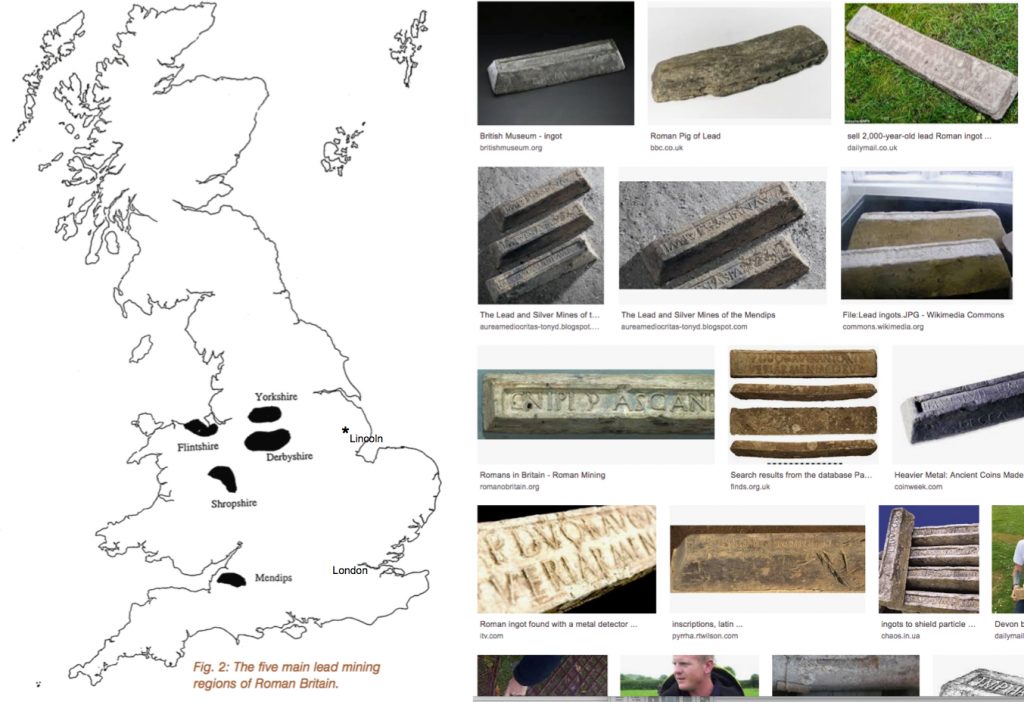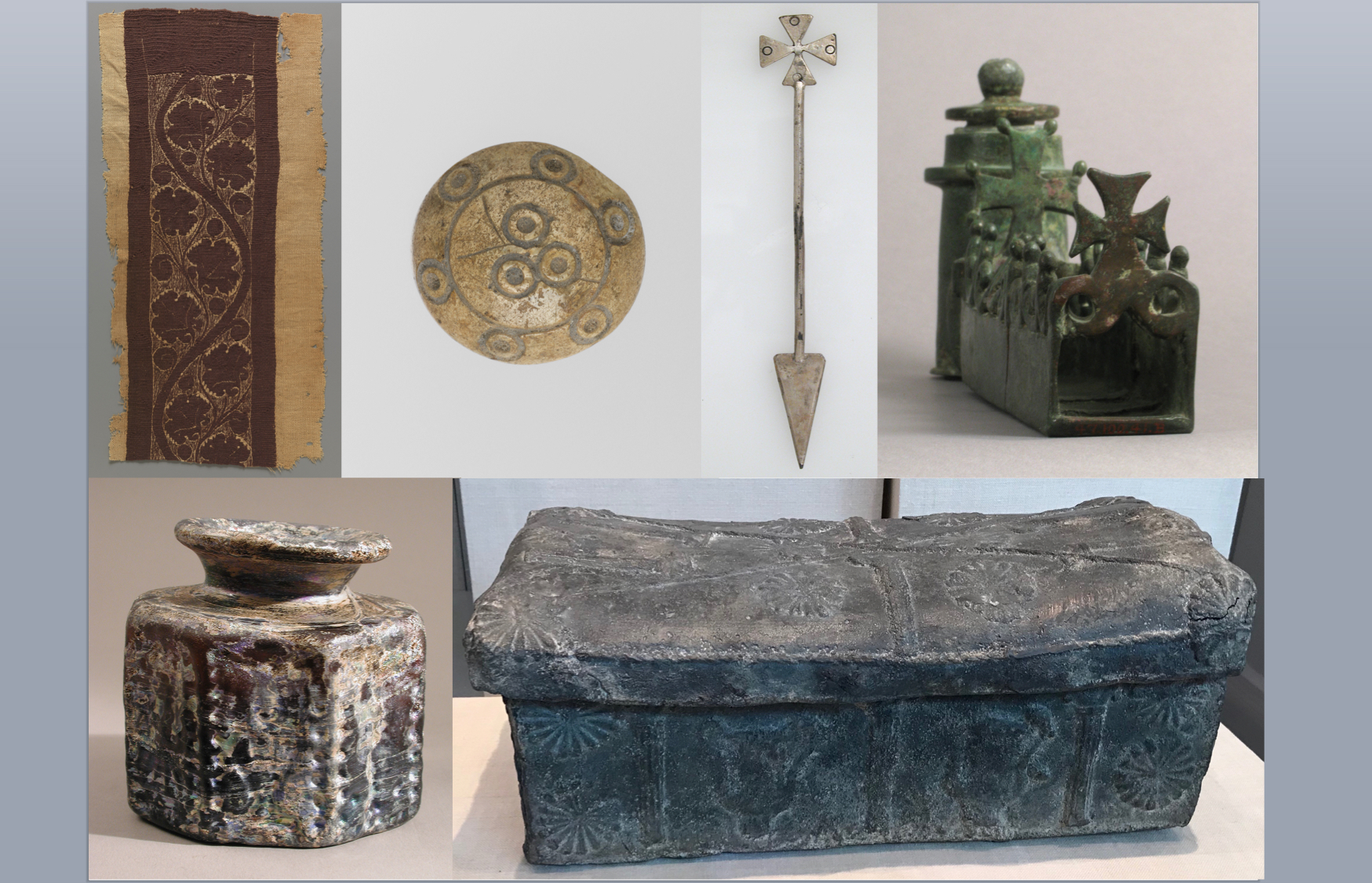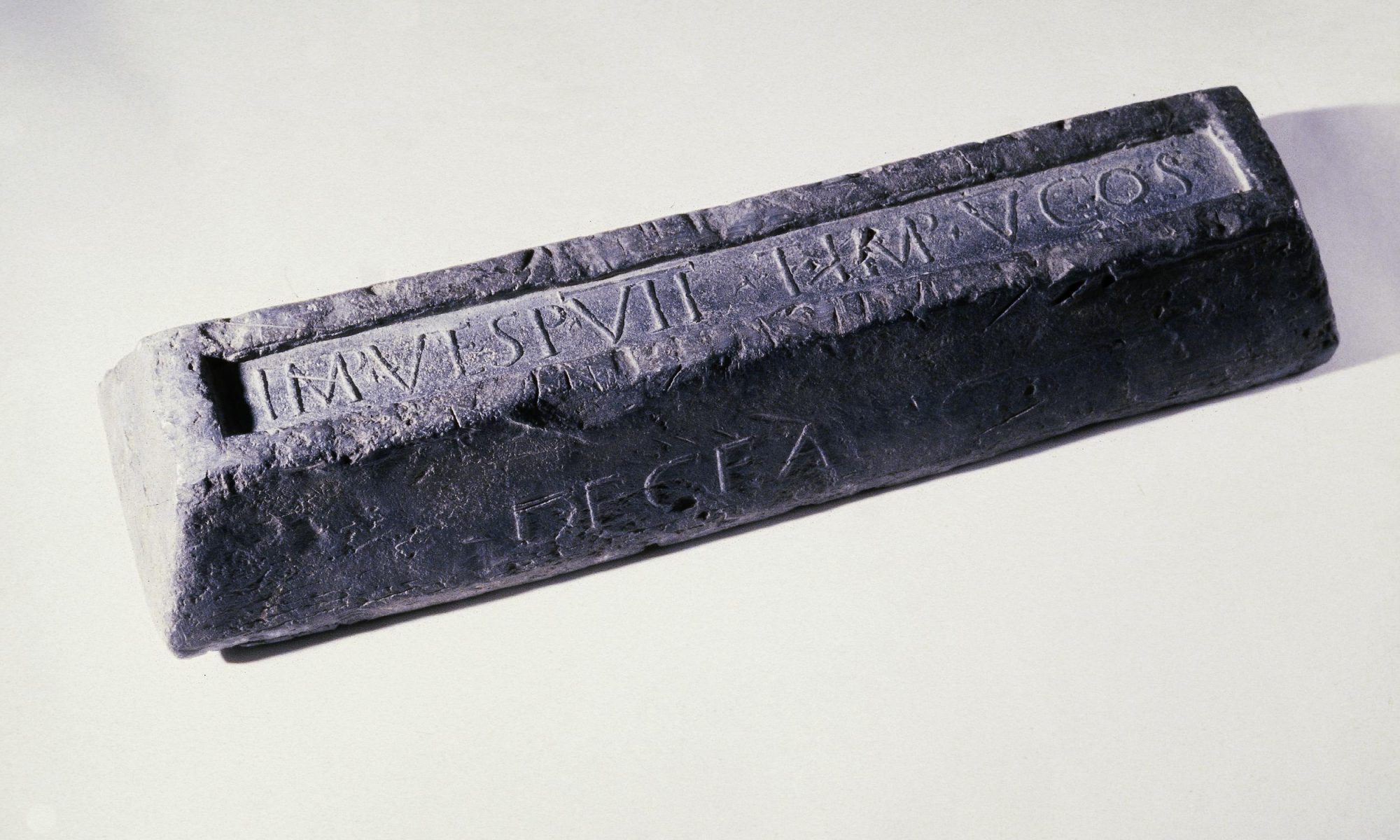Roman lead production began immediately after the conquest of Britain in AD 43; the first marked ingot to have survived bears the year AD 49. The principal lead mines in Britain were in Somerset (Mendips), Shropshire, Flintshire in northern Wales, south Yorkshire (north Pennines) and Derbyshire (south Pennines).[i] There is evidence for Iron Age lead extraction and production, prior to the Roman conquest, at all of these locations, generally for the manufacture of everyday objects like spindle whorls and fishing weights, but also rings and bracelets.[ii]

Tacitus (Agricola 12) considered the acquisition of ‘gold and silver and other metals as the prize for the conquest’ of Britain. However, British ores had very little silver. Ores from the Yorkshire and Derbyshire contain the least amount and that from the Mendips the highest by far. Yet Britain’s ores were so rich in lead that only about 75 percent of the available lead was regularly extracted from galena.[iii] Writing around three decades after the Roman conquest of Britain, Pliny the Elder commented, in his Natural History, 34.49, ‘in Britannia it [lead] is found in the upper stratum of the earth, in such abundance, that a law has been spontaneously made, prohibiting any one from working more than a certain quantity of it’.[iv]
For more than a century after the Roman conquest of the island, lead ingots produced in Britannia, called ‘pigs’, were marked with an indication of weight, where and when they were produced, frequently with the names of emperors, starting with Claudius until Marcus Aurelius.[v] More than 100 pigs are now known, and new finds are made occasionally, either near known production sites or along Roman transportation routes. It seems likely that some pigs were stolen during transit and well hidden, hence they have survived untouched to be found today. Early pigs explicitly indicate military control of the mines. Inscriptions disappear from British pigs, as they do elsewhere in the empire, after Marcus Aurelius (d. 180).[vi] This has been interpreted as an indication of decreased imperial control and lower levels of lead production from the start of the third century, although unmarked pigs continued to be found, several in fourth-century contexts.[vii] In a short but important article, Vincent Gardiner posited a military phase of production, followed by an early commercial phase (late first – early second century, when companies, societates, controlled production), a Hadrianic phase (when huge amounts of lead were required for construction), and a later commercial phase from the later second century.[viii]

Gardiner also provided analysis of the distribution of lead pigs, showing clearly that they are concentrated as one would expect within a zone around the site of production, close to navigable rivers (37%) or Roman roads (24%), with a greater spread to the side of the point of origin that approaches a port from which the ingots might be exported.[ix] Lead from the Mendips appears to have been exported from the port of Clausentum, modern Bitterne near Southampton, on England’s south coast. For the mines of Yorkshire and Derbyshire, the principal port from which pigs were exported was Petuaria (Brough-on-Humber), on the east coast. Eight pigs discovered at Brough-on-Humber are marked as products of Lutudarum,[x] a mine to the north of Derby, in the east Midlands. Additionally, these pigs all bear the mark BR or BRIT, presumably for BRITANNICUM, British, which strongly suggests they were marked for export. Six pigs from the same mould have been identified, all cast to an approximate 200-libra standard and weighing between 184 and 196lbs (except one damaged ingot, RIB 2404.47, which has lost part of its back and right end, weighing 135lbs). They are inscribed G[AI] I[ULI] PROTI BRIT[ANNICUM] LUT[UDARENSE] EX ARG[ENTARIIS], which might be translated as ‘[Produced by] Gaius Julius Protus: British [lead from] Lutudarum, from the silver[-lead works]’.[xi]
We do not how far afield British lead was exported, but lead isotope analysis is beginning to offer compelling insights, for example isotope signatures of British lead have been identified in lead pipes discovered in Pompeii and at Rome itself. Lead coffins produced in Syria surely contained British lead. Shipwreck evidence has long provided clues, including off the coast of Syria. A notable, but vaguely dated wreck, probably of the third or fourth century AD, off the coast of Brittany saw 271 lead pigs spill onto the sea floor. These can only have been from Britain. Analysis of copper alloy jewelry excavated from graves in Kissi, northeastern Burkina Faso, demonstrate that lead from Britain, Spain and Sardinia had made its way via Roman north Africa to sub-Saharan west Africa, surely within metal objects melted down and remade locally. We believe West African gold was travelling in the opposite direction.[xii]
Notes
[i] On different ages and natures of formation, see S. Moorbath, ‘Lead isotope abundance studies on mineral occurrences in the British isles and their geological significance’, Philosophical Transactions of the Royal Society of London, Series A, Mathematical and Physical Sciences 254, no. 1042 (1962), 295-360.
[ii] M. Ponting, ‘Pretia Victoriae or just an occasional bonus? Analysis of iron age lead artefacts from the Somerset lake villages’, Oxford Journal of Archaeology 37 (2018), 185-99.
[iii] This was not for lack of ability. See R. F. Tylecote, ‘Roman lead working in Britain’, British Journal for the History of Science 2 (1964), 25-43.
[iv] Pliny also made other intriguing comments that have vexed interpreters, for example referring to ‘white lead’ (plumbum album) as well as ‘black lead’ (plumbum nigrum). While it is clear that ‘black lead’ is lead, ‘white lead’ has been understood both as silvered lead (i.e. the metal prior to cupellation) and tin. It seems clear to me that the latter interpretation is correct, as it makes greater sense of Pliny’s slightly later observation, in the same chapter, that an alloy called argentarium is made by mixing together black and white lead which is used for soldering pipes. Plumbum nigrum, if it is tin, in Pliny’s day in Rome, cost 80 denarii per pound, argentarium (pewter, with a ratio of 66% tin and 33% lead) 70 denarii per pound, and black lead only 7 denarii per pound. The price difference between is interesting, and one must imagine it held so long as tin remained more scarce than lead, and that both lead and tin were far less expensive where they were naturally abundant, for example in southwestern Britain. There were productive tin mines in Cornwall, close to the Mendip lead mines in Somerset, but not elsewhere in Britain.
[v] Roman Inscriptions of Britain, II.1, ed. S. Frere, M. Roxan and R. Tomlin, 38-46, ‘RIB 2404: Lead pigs’.
[vi] RIB II.1, 65, no. 2404.72a. A pig, probably of British origin, has been discovered in Bourgogne, France, that is inscribed as the property of Septimius Severus
[vii] RIB II.1, 38.
[viii] V. Gardiner, ‘An analysis of Romano-British lead pigs’, Institute of Archaeo-Metallurgical Studies 21 (2001), 11-13. This may be compared with the Spanish situation, for example as interpreted by B. Díaz Ariño and J. A. Antolinos Marín, ‘The organization of mining and metal production in Carthago Nova between the late Republic and early Empire’, Athenaeum 101/2 (2013), 535-53, which posits an early proliferation of small mining companies, from the second to first centuries BC, followed by a period of consolidation and the domination of a few large companies (societates) until the middle of the first century AD, when the mines closed.
[ix] Gardiner 2001, 13; RIB II.1, 38, suggests that the discovery of some lead pigs in pairs may suggest transportation by packhorse.
[x] A. Shone, ‘The search for Lutudarum, evidence and supposition’, Derbyshire Miscellany 17 (2006), 106-16, sets out a strong case that Lutudarum must be identified with Wirksworth, despite little material evidence. A. Breeze, ‘The name of Lutudarum, Derbyshire’, Britannia 33 (2002), 266-8, prefers Carsington, on the basis that excavations have taken place there. See also RIB II.1, p. 56.
[xi] A. Bradwell, ‘Derbyshire Roman lead pigs and “Lutudarum”’, Mining History: Bulletin of the Peak District Mine Historical Society 19 (2014), 14-16; RIB II.1, 56-61. However, the meaning of EX ARG. has been discussed further, notably at Gardiner 2001, 12. Bradwell 2014, has suggested EX ARG refers to the assaying of the ingots to determine that they are ‘without silver’, meaning insufficient to warrant cupellation (removal of silver). The Lutudarum pigs do have very small amounts of silver, but Derbyshire lead sulphide contained very little silver. Two of the pigs from Petuaria also have fragments of lead sulphide that have survived smelting, demonstrating that cupellation has not taken place. Analysis of the three lead vessels in The Collection at Lincoln failed to detect any silver. This is not unusual. Around three-quarters of lead ingots discovered in Britain have levels of silver that are undetectable or below 0.01%/120 ppm.
[xii] H. Delile et al. ‘Lead in ancient Rome’s city waters’, fig. S3; H. Delile et al. ‘A lead isotope perspective on urban development in ancient Naples’, PNAS 113 (2016), 6148-53. See also H. Delile et al., ‘Rome’s urban history inferred from PB-contaminated waters trapped in its ancient harbor basins’, PNAS early edition (August 2017); T. R. Fenn et al., ‘Contacts between West Africa and Roman North Africa: archaeometallurgical results from Kissi, Northeastern Burkina Faso’, in Crossroads / Carrefour Sahel. Cultural and technological developments in first millennium BC / AD West Africa. Développements culturels et téchnologiques pendant le premier millénaire BC / AD dans l’Afrique de l’Ouest, eds S. Magnavita et al. (Frankfurt, 2009), pp. 119-46; T. Garrard, ‘Myth and metrology: the early trans-Saharan gold trade’, Journal of African History 23 (1982), 443-61; A. Wilson, ‘Cyrenaica and the late antique economy’, Ancient West and East 3 (2004), 143-54.

